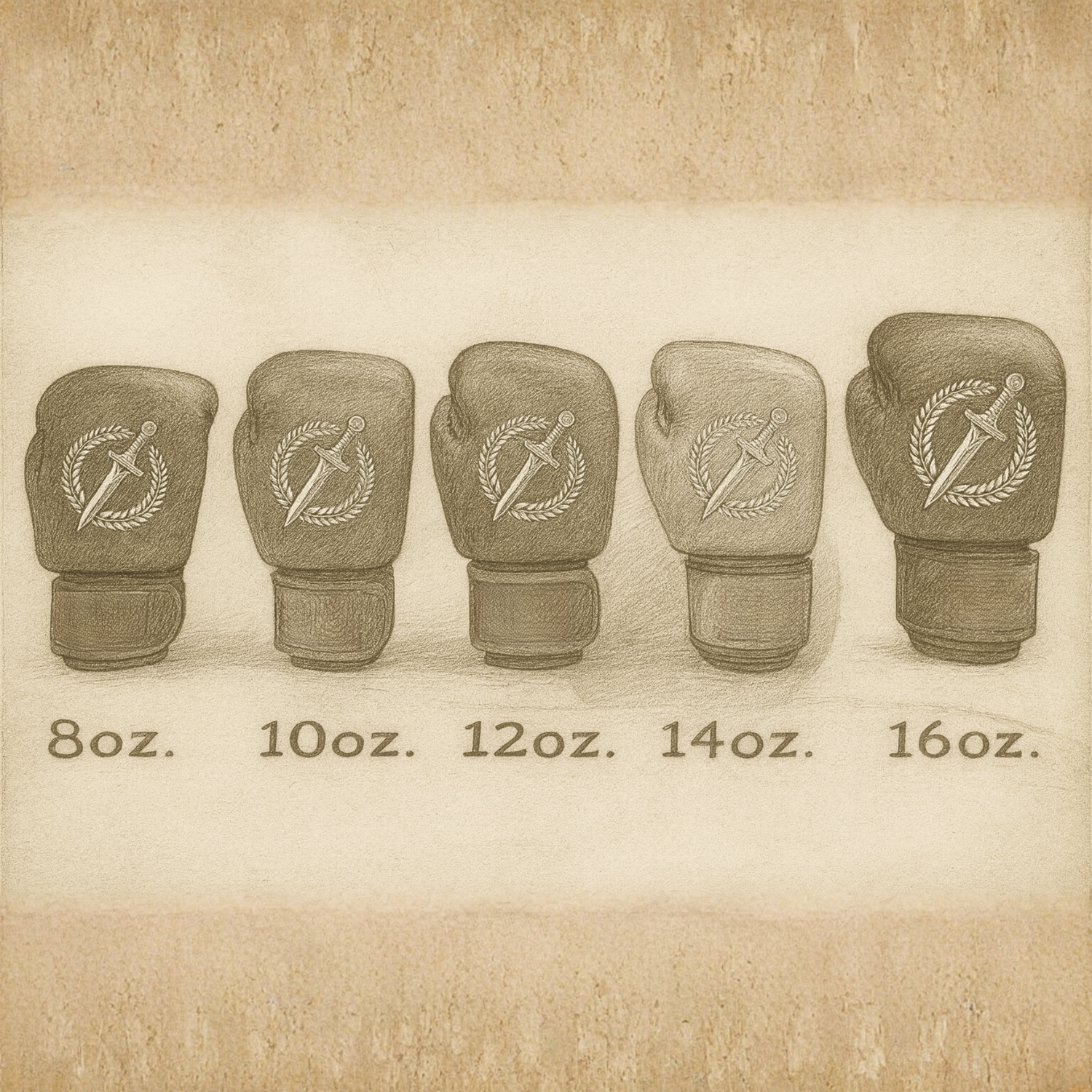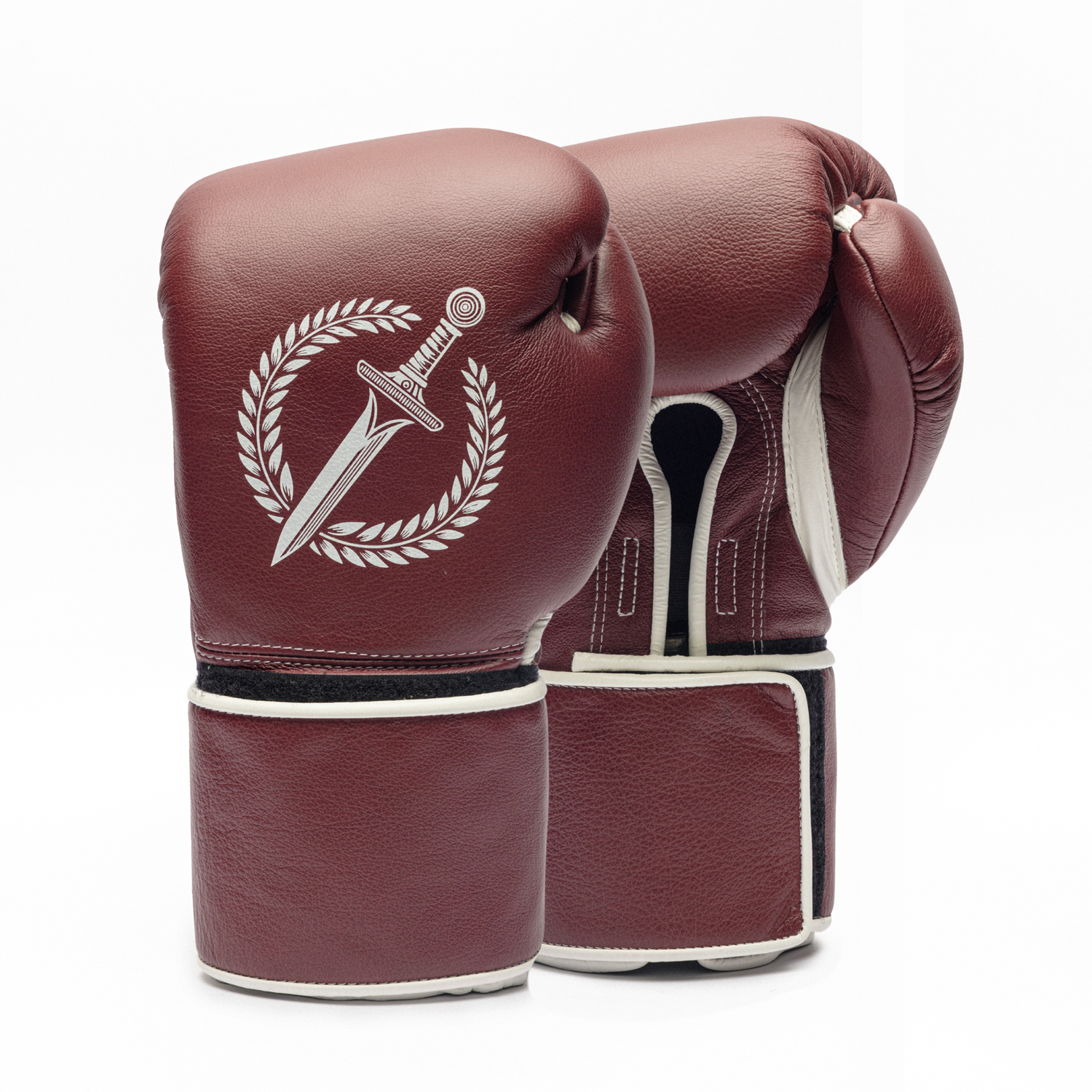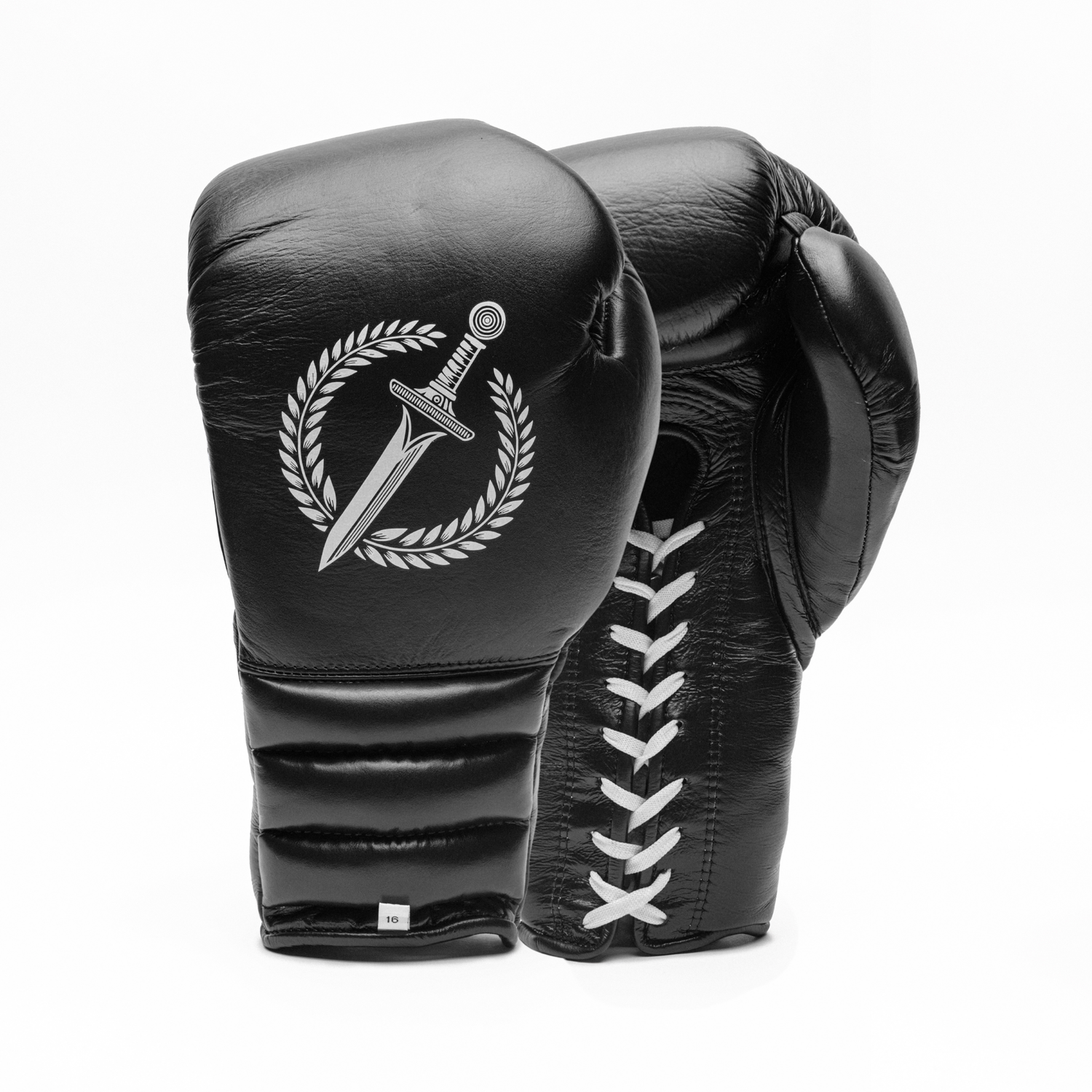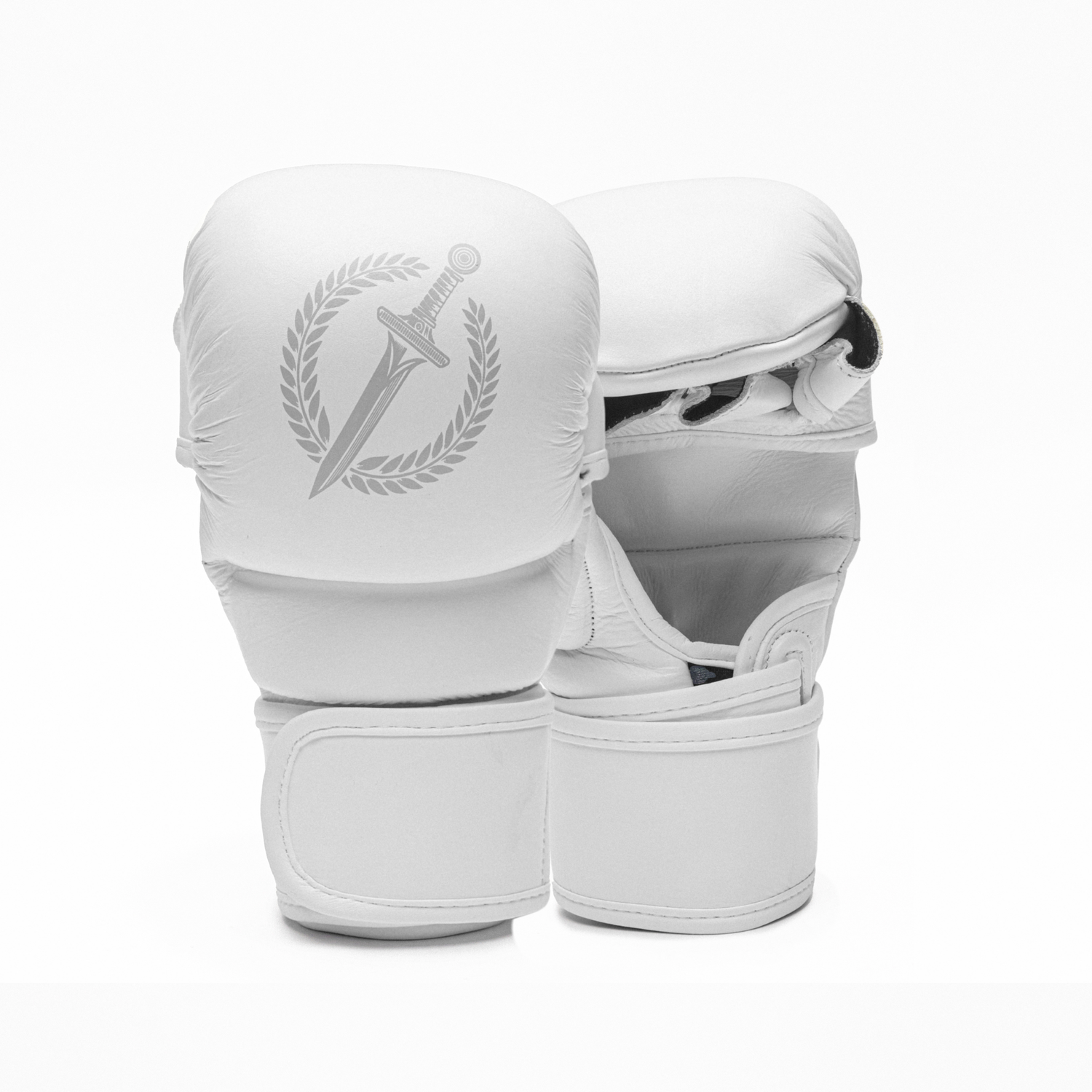Unlike clothes or shoes, glove sizes aren’t labeled small, medium, or large, they're labeled in ounces.
The right number makes a big difference in how you train, how protected you are, and how your punches land. It may be confusing for newcomers, but once you get the hang of it you'll easily be able to pick the best size for your training needs.
This guide will help you choose the right ounce size based on your weight, training goals, and experience level. If you want a shortcut you can take our 5-question quiz and instantly discover your perfect fit, or take the long road and keep reading for a complete breakdown to choose it yourself.
What does ounces mean in boxing gloves?
In the world of boxing, the term “ounces” (abbreviated as “oz”) refers to the weight of the boxing gloves. This weight includes the padding, outer material, and internal structure of the glove. It’s a crucial factor in determining the glove's intended use, whether for sparring, training, or professional matches.
A heavier glove, like a 16oz glove, offers more padding and protection, ideal for sparring. On the other hand, lighter gloves such as 8oz or 10oz are designed for speed and impact, commonly used in competitive fights.
Heavier gloves also requires more effort to punch and keep your hands up. It might not feel like much in the first round, but trust me, those added ounces start to matter when you're in deep waters.
It’s also important to note that ounces don’t always correlate directly with a glove’s physical size or how it fits in the hand, only with its weight. Two gloves can have the same measures but different padding, resulting in completely different bulk and feel.
That’s why a heavyweight can still wear a 10oz glove comfortably in a professional fight, while a featherweight might choose a 16oz glove for sparring to better protect their hands in the gym.
Why boxing glove weight matters
The ounce size directly affects a boxer’s:
-
Hand and wrist protection
-
Training efficiency
-
Speed and stamina
-
Punch impact and control
Selecting the wrong glove weight could lead to injuries or improper technique development. That’s why understanding boxing gloves ounces is critical for safety and performance.

Three Gladius legionary gloves. Same model, different ounces.
Standard boxing glove weights
Boxing and Muay Thai gloves typically range from 6 ounces to 20 ounces, with each weight serving a specific purpose:
-
6oz–8oz: Used by youth boxers or professional fighters with smaller hands. These gloves are not recommended past the youth phase, as they offer very small protection for an adult-sized hand.
-
10oz: Popular in pro bouts and competitions, this size prioritizes damage to the opponent vs. protection of the hand. Therefore it is not very popular for training and used only in specific exercises.
-
12oz: Good for pad work and light bag training. Not safe for sparring rounds as the thin layer of padding is likely to cause too much damage to the training partner.
-
14oz: Ideal for general training and moderate sparring. The 14 ounces are considered the most versatile glove a fighter can have in its arsenal, as it fits right in the middle between the speed of a 12oz and the protection of a 16oz.
-
16oz: The standard sparring glove. This is a good size to have in your arsenal for sparring days, but it may be too bulky for other exercises such as pad work, mitts and heavy bag. It is also the most appropriate size for heavier fighters.
-
18oz–20oz: Used by ultra-heavyweight fighters or for additional protection during sparring. These are not commonly sold and usually made custom to the fighter requesting it.

The Gladius Empress in this picture is a 16oz. The ideal size for heavy fighters and for sparring.
How to choose the right ounces for your gloves
Choosing the right ounce size depends on 5 key factors. Let's breakdown each one of them so you can make your pick:
1. Your body weight
Boxers in heavier weight classes often use gloves with more padding to protect themselves and their partners. For instance, a heavyweight might use 18oz gloves, while a featherweight could go with 14oz or less. The rule of thumb is: more weight = more raw strength = more ounces needed for protection.
This table below is a good proxy to start:
| Bodyweight (lbs) | Bodyweight (kgs) | Glove weight (oz) |
| Less than 130 lbs | Less than 59kg | 8-12oz |
| 130-160 lbs | 59-73 kg | 12oz-14oz |
| 160-200 lbs | 73-91 kg | 14oz |
| 200 lbs | +91kg | 16oz |
2. Your training purpose (sparring, competition, etc.)
Fighters that train casually or for hobby would do well by just having a 14oz glove, while competitive fighters may need an arsenal of different sizes to use for different drills. Evaluate what is your training schedule and the main use you want to give for your glove:
-
All-purpose training: 14oz is the best pick for its versatility - not too heavy, not too light. You can do pretty much every exercise with it except for hard sparring.
-
Mitt and pad work: 10–12oz is usually the preferred size due to its lighter profile. Punches are faster, shoulders stay fresher, and it’s closer to the glove weight fighters experience in competition.
-
Sparring: 16oz is the clear winner. Most serious gyms only allow this size to be used in their hard sparring sessions and it’s also good etiquette to use a heavier glove to protect your training partner. If you're a big heavyweight with a lot of power, consider going up a notch and lacing up a pair of 18–20oz.

Glove ounces can be found in the small label in front of the wrist section.
3. Your level of expertise in combat sports
New fighters with limited experience will usually benefit more from heavier gloves, even if they’re light on the scale.
A bulkier glove offers better hand protection, something especially valuable while you’re still learning how to punch correctly. They also improve shoulder conditioning and train you to keep your hands up even when you’re tired (trust me, this pays off heavily later on).
Experienced fighters will often have more than one glove and choose the ounces based on the type of training they’re doing that day. It’s common to see a seasoned boxer or Muay Thai practitioner rotate between 2–3 pairs. This group may choose lighter gloves for mitt and pad work as part of their arsenal.
Your level of competitive ambition also has a big impact on glove size. In this case, we always recommend asking your coach what size will best support your competition training. Also consider what size will be used on fight day — pro bouts tend to require lighter gloves to increase damage and knockout potential, while amateur tournaments often use 16oz gloves to prioritize fighter safety.
4. Your hand size
An important part of picking the right ounces is making sure the glove fits your hand well. And while we mentioned earlier that fit and ounces aren’t the same thing, they sometimes go hand in hand.
Big hands usually pair better with heavier gloves, while smaller hands tend to fit better in lighter ones. Even if you’re a lighter fighter, if your hands are larger than average, it may be worth sizing up for added comfort.
The good news? You don’t need to obsess over exact measurements or grab a measuring tape. The best way to find your fit is by trying on two similar gloves with different ounce sizes and seeing which one feels better. Just make sure to wear hand wraps during the test. That’s how you’ll get the most accurate feel for real training conditions.
When in doubt, size up. It’s always better to have a glove that’s slightly bigger than one that’s too tight and restrictive.
5. Your history of hand pain or problems
Hand pain and injuries are no joke and they should be taken seriously. If you’ve had recurring pain or a history of hand injuries, going with a heavier glove is the smart move. It provides more padding, better protection, and helps prevent things from getting worse.
Important note: If you're consistently experiencing pain or injuries in your hands, we 100% recommend seeing a physician. It could be a condition unrelated to your glove choice, and it needs to be evaluated by a medical professional.

A beautiful pair of Gladius Sailor velcro boxing gloves. Those you see here are 14oz.
Wrap-up: What is the size for you?
Choosing the right glove size isn’t just about numbers. Whether you’re training casually, sparring hard, or preparing for competition, the right ounces make a real difference in performance, comfort, and safety.
Hopefully this guide helped you find the right fit for you or at least gave you a hint of what sizes you should try on before a purchase.
If you’re still unsure, remember: you don’t have to guess. Take our 5-question Gladius Ounces Quiz in the beggining of this article to find the perfect fit in under a minute or reach out to our team if you need extra guidance.
Your gloves aren’t just gear. They’re your weapon. Make sure they fit like one.
Frequently Asked Questions
You should choose glove ounces based on five key factors:
-
Your body weight – Heavier fighters generally need more padding for protection.
-
Your training purpose – Use 10–12oz for pads, 14oz for general training, and 16oz+ for sparring.
-
Your experience level – Beginners benefit from heavier gloves for safety and conditioning.
-
Your hand size – Bigger hands may feel more comfortable in higher ounce gloves.
-
Any history of hand pain or injury – If you’ve had issues, choose a heavier glove for added protection.





